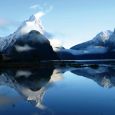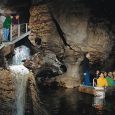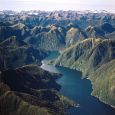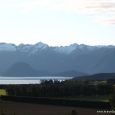Fiord
Advertisement
Air
There are no scheduled flights to Te Anau Airport. The closest airports with scheduled domestic flights are Queenstown Aiport and Invercargill Airport. Queenstown also receives international flights from Australia.
Coach
Several companies offer a range of scheduled services to Te Anau from Queenstown, Invercargill and Dunedin.
Self Drive
The roads in Fiordland are well maintained, and clearly signposted. Over the winter months all vehicles on the Milford Road are required by law to carry snow chains.
Doubtful Sound
Sometimes called the 'Sound of Silence' Doubtful Sound is the deepest (421 metres) and second longest (40 kilometres) of the South Island's fiords. It is a powerful place - serene, mysterious and untouched by the modern world.
The fiord was originally named Doubtful Harbour by Captain James Cook, who didn't sail into the inlet because it looked a bit tight for safe manoeuvring. It was later named Doubtful Sound by whalers and sealers.
Like other fiords in the area, Doubtful Sound contains two distinct layers of water that don't mix. The top few meters is fresh water, fed by runoff from the surrounding mountains. Below this is a layer of salt water from the sea. The difference in refractive index between these two layers makes it difficult for light to penetrate. As a result, many deep-sea species - such as black coral - grow in the comparatively shallow depths.
Doubtful Sound has some splendid waterfalls, particularly during the wetter seasons. In the Hall Arm, the Browne Falls cascades 619 metres; Helena Falls at Deep Cove tumbles 220 metres. Wildlife is another reason to visit this fiord - keep an eye out for bottlenose dolphins, fur seals and penguins.
Te Anau Glowworm Caves
Te Anau Glowworm Caves, on the western shore of Lake Te Anau, They were discovered in 1948 by Lawson Burrows, who found the upper entry after three years of searching, following clues in old Maori legends.[1] It later became a major tourist attraction for the area, as the part of the caverns close to the lake shore is home to glowworms. Real Journeys operate daily guided excursions across the lake.
Fiordland National Park
One of the most dramatic and beautiful parts of New Zealand, the power of Fiordland’s scenery never fails to enthral travellers. Waterfalls tumble hundreds of metres into massive fiords; ancient rainforest clings impossibly to the mountains; shimmering lakes and granite peaks look the same today as they did a thousand years ago.
Carved by glaciers during successive ice ages, the park's fourteen fiords were 100,000 years in the making. The Maori attributed their creation to a giant stonemason called Tute Rakiwhanoa.
At 421 metres, Doubtful Sound is the deepest of New Zealand’s fiords. It’s a haven for nature, with resident bottlenose dolphins, fur seals and penguins.
Manapouri
Situated at the edge of Fiordland National Park, the lakeside town of Manapouri provides a base for journeys into the glacier-carved wilderness. Lake Manapouri is the second deepest lake in New Zealand and has a large hydro power station at the end of its west arm. The creation of the power station in 1959 improved access to Doubtful Sound (a fiord), which you can explore by sea kayak or cruise boat. Some guided tours involve a bit of everything – hiking, kayaking and sailing. Power station tours can be arranged. You can also explore Lake Manapouri by kayak or take to the hiking trails – the Circle Track, Kepler Track and remote Dusky Track are local favourites.
Information not available





